Dancer and scholar Padma Subrahmanyam vividly recalls that morning in the first week of November, 1981. The weather was somewhat similar to what it is now in Chennai, the air, unarguably cleaner and the traffic, a breeze. Padhukka, as she is popularly known in the world of Indian classical performing arts, had just returned to her home in Chennai, after a week-long workshop on the Natyashastra at the Bhulabhai Desai Institute in Mumbai.
A few days later, the Mumbai-based institute called her again – possibly propelled by the huge response to her workshop, where more than a hundred artistes and scholars had participated, to convene the Natya Kala Conference (NKC) in Mumbai.
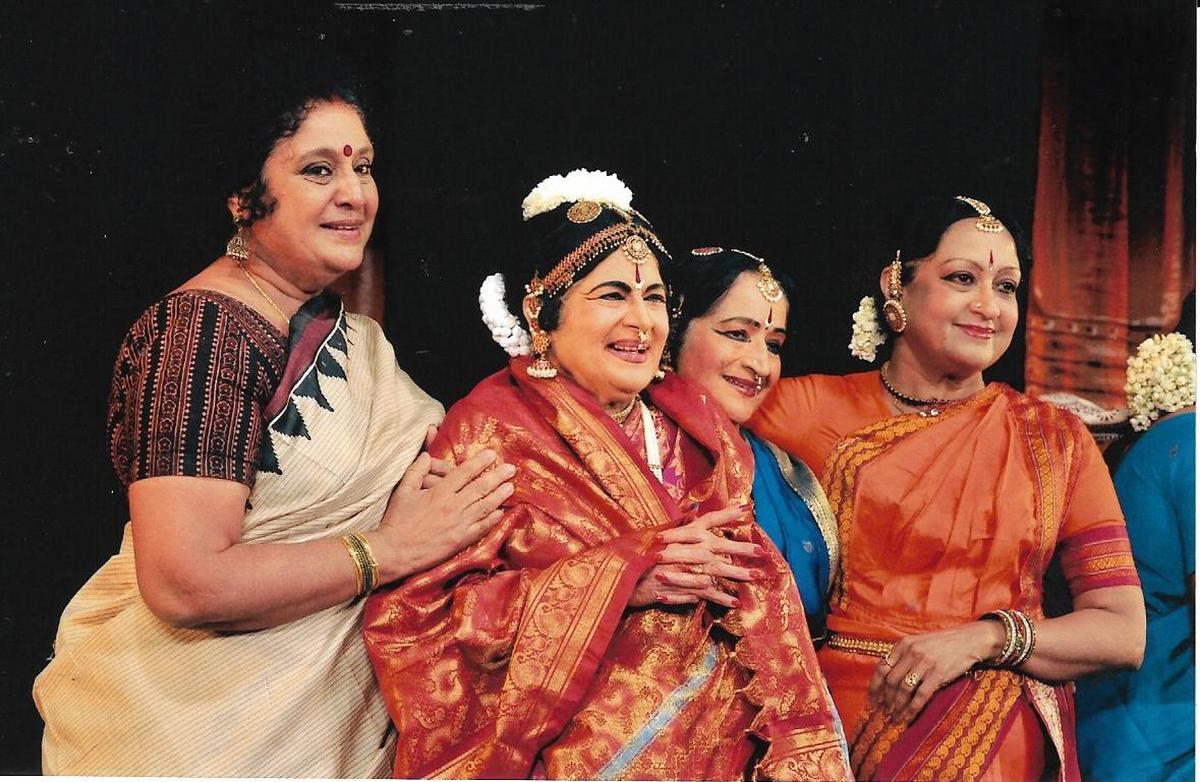
Chitra Visweswaran, Kumari Kamala, Rhadha, and Padma Subrahmanyam.
| Photo Credit:
Photo Courtesy: KGS
“It so happened,” Padhukka says, “Sri Yagnaraman, founder, Krishna Gana Sabha (KGS), was at my home during the call. After I hung up, and mentioned the conversation, without batting an eyelid, he told me to request the organisers that the Natya Kala Conference be conducted at KGS instead of in Mumbai.”
“And that’s how NKC was born,” says Y. Prabhu, general secretary, Krishna Gana Sabha, sitting in his office in T. Nagar, and reminiscing his father’s foresight in anchoring a conference devoted singularly to dance and the many worlds it inhabits, in the cultural capital of India — Chennai.
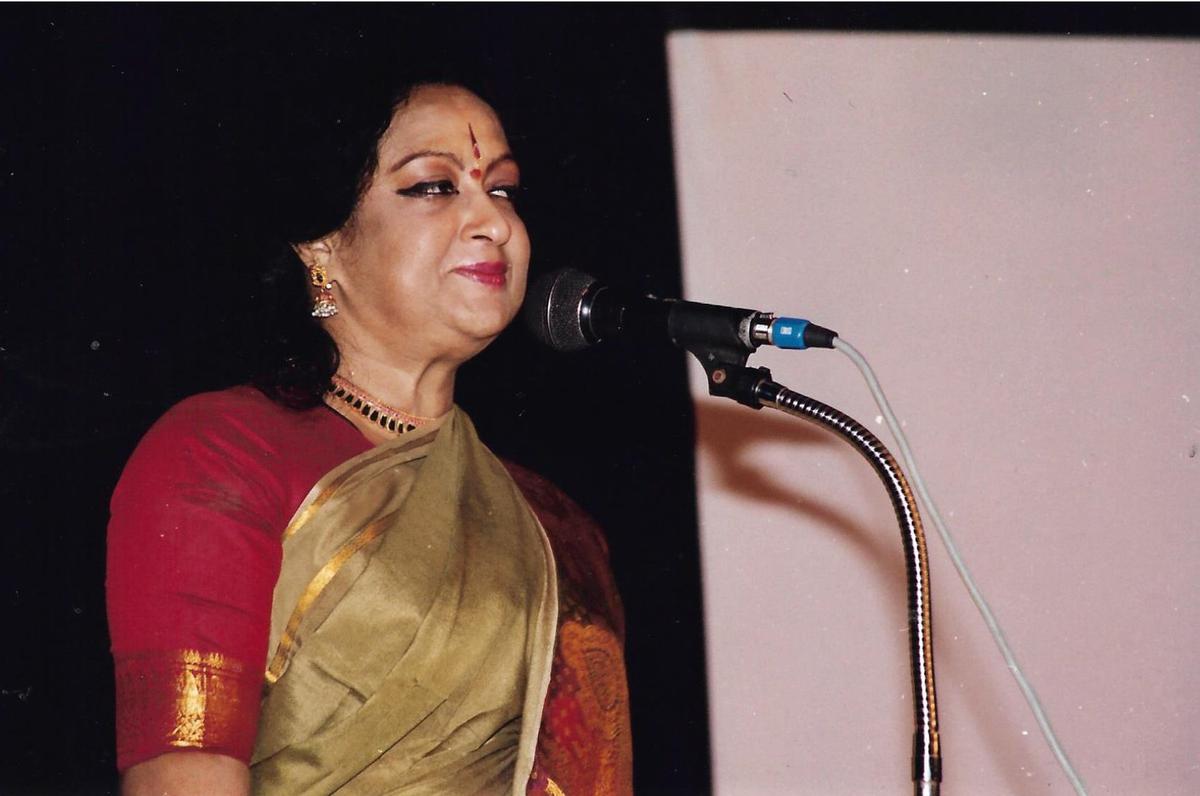
Padma Subrahmanyam at one of the earlier editions of the Natya Kala Conference.
| Photo Credit:
Photo courtesy: KGS
Prabhu, a practising chartered accountant, who was also assisting his father in matters of the sabha, was in his late 30s then. Any conversation about the first edition of NKC, lights up his eyes. “For seven days in a row,” he says, “Padma Subrahmanyam enabled audiences to experience the possibility of real immersion, exposure, and enormous amounts of learning in a conference she titled, ‘Unit and Integration of the Various Theatrical Art Forms of India’.”
Amongst a galaxy of dance practitioners, performers, writers, scholars and, critics, was 12-year-old Srinidhi Rangarajan (later Chidambaram), who, had already been hailed a child prodigy in dance. She remembers being completely awestruck by the “stunning curation of Padhukka and the artistes who shared and showcased their art”. Thirty five years later, in 2016, Dr. Srinidhi Chidamabram wore the convenor’s hat and like Padma Subrahmanyam, curated three editions of the NKC. The third edition she curated in 2018 titled ‘Aneka’, brought to the fore innovations, trends and concerns that challenge the world of dance.
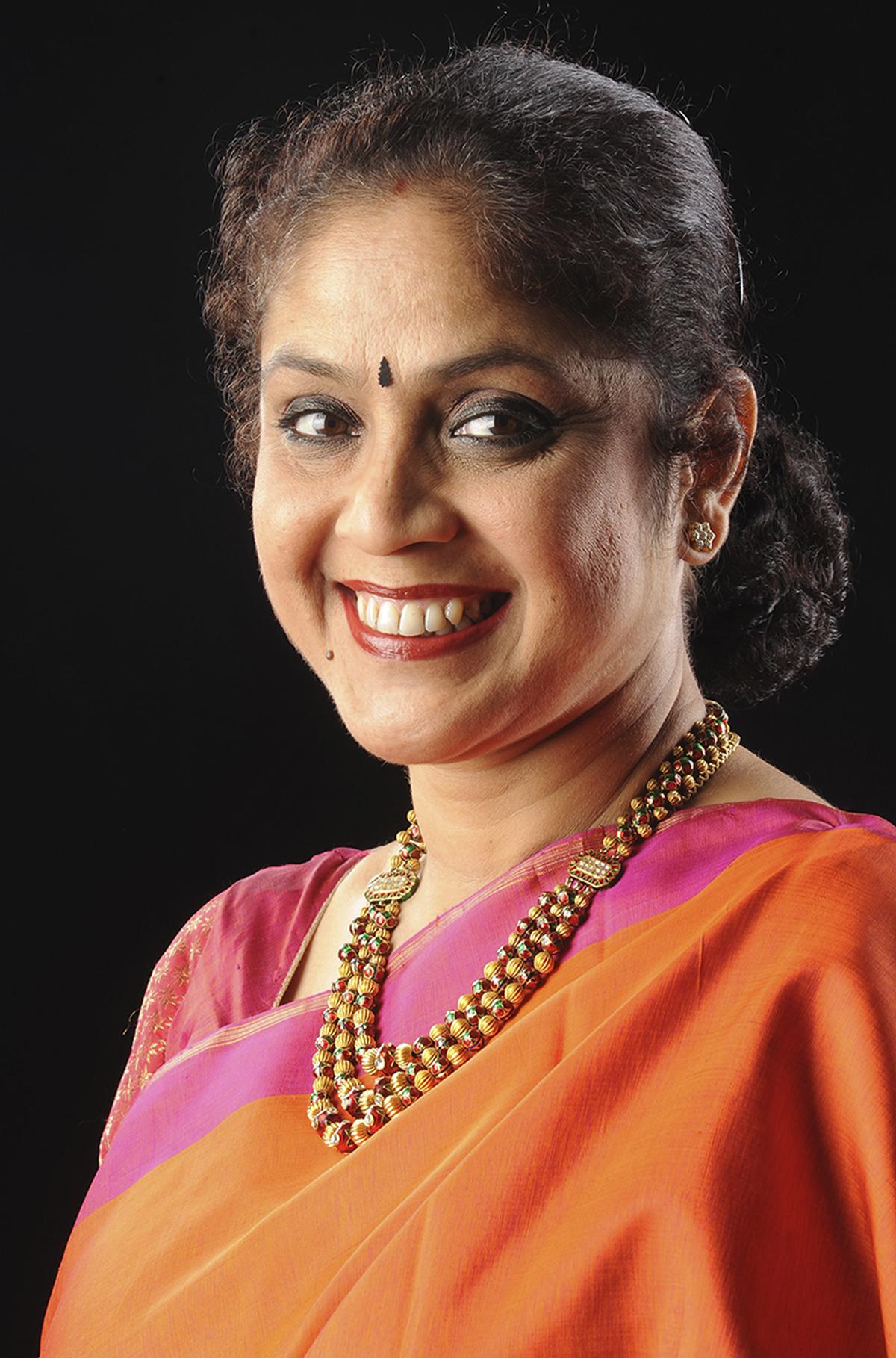
Ananda Shankar Jayant.
| Photo Credit:
Special Arrangement
“Each year,” recalls Srinidhi, “was a huge learning experience and an exercise in project management, team work, collaboration and, of course, camaraderie.”
In the context of conferences in the realm of Indian classical arts across India, the Natya Kala Conference enjoys the privileged position of being the only one dedicated to dance that has stood the test of time. Journeying into its 40th edition this year — Rama Vaidyanathan is the convenor — the conference is testimony to the ethos of inclusivity, diversity, and above all, sustainability.
Over 39 editions, NKC has had as its convenors 21 celebrated dancers from across genres of Indian classical dance — Kanak Rele, Bharati Shivaji, Swapna Sundari and Sonal Mansingh, among others. They embarked on curatorial journeys to unfurl five days of an environment filled with learning, sharing and, above all, one that celebrates the joy of dance.
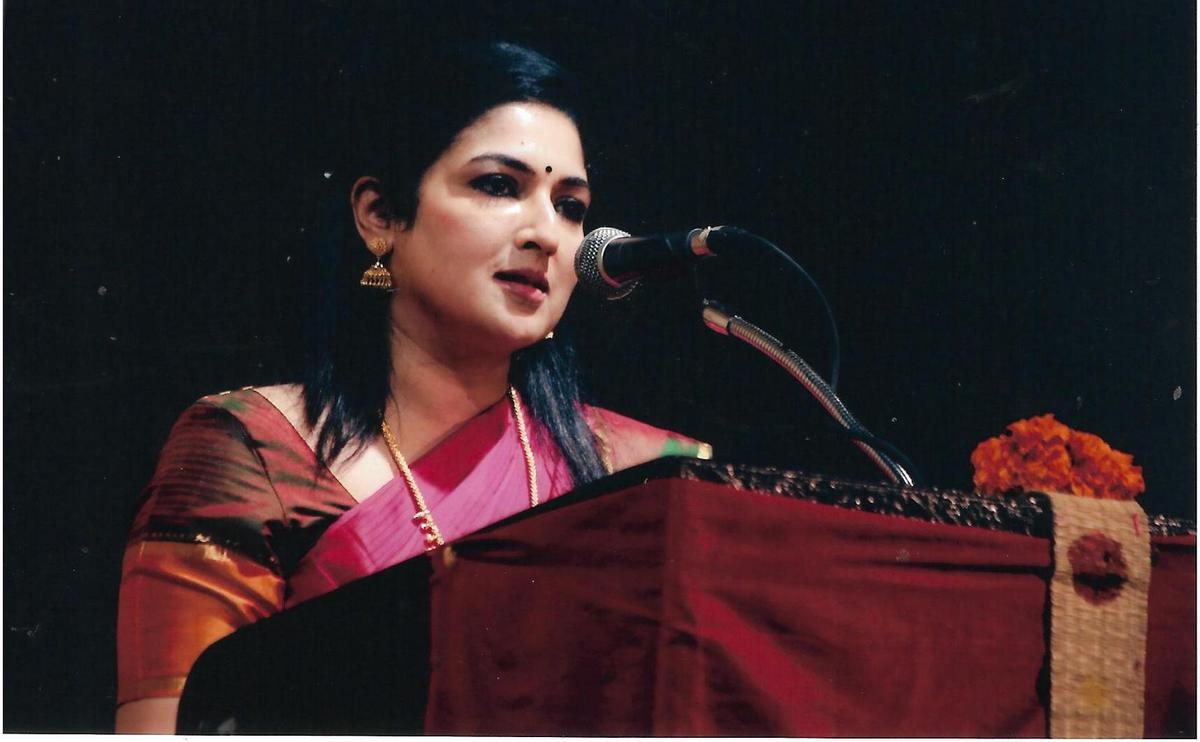
Srinidhi Chidambaram presenting her session at one of the earlier editions of Natya Kala Conference.
| Photo Credit:
Photo courtesy: KGS
In 1996 and 1997, Chitra Visweswaran, convened the conference, and in her attempt to present “hitherto untouched topics”, she says she “looked at dance as an interdisciplinary activity. And I don’t mean interdisciplinary just in the sense of enriching the art through cross pollination but also finding avenues beyond the existing performance arena for practitioners of Natyam.”
Her conference helped bring to KGS, stalwarts from outside Chennai such as Kelucharan Mohapatra, Kumudhini Lakhia, Veenapani Chawla, Avanthi Meduri, Ramli Ibrahim, Anne Marie Gaston, and Rajika Puri, who discussed subjects such as lighting design, stage décor, special education, and theatre and the folk arts.
In 2008, Hyderabad-based dancer and bureaucrat Ananda Shankar Jayanth, brought her own sense of innovation and dynamism to the conference, approaching the themes –– ‘Ramayana in Performing Arts’ (2008) and ‘Dance Matters’ (2009) – in a multi-layered way. “I didn’t restrict myself to just dance but attempted to encompass everything that knit itself around dance,” she says. “In addition to discussing — amongst other things — dance on television and films and bringing Saroj Khan, acclaimed Bollywood dance choreographer, to perform a film song on the KGS stage, I also introduced to the conference, a daily newsletter, two detailed conferences brochures, an exclusive website, WiFi connectivity, blogs by non-dancers, and a storytelling session by V. R. Devika for 250 school children. I was told that was the first time that children were part of the conference.”
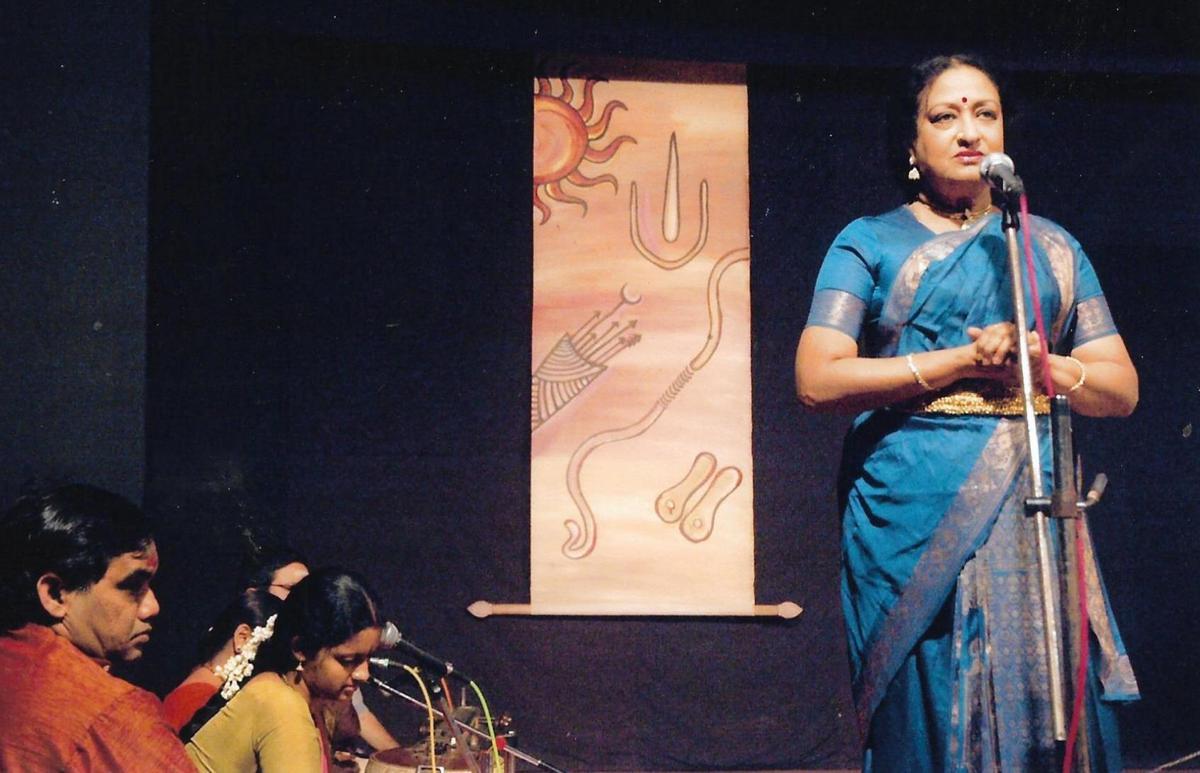
Padma Subrahmanyam’s lecture at the Natya Kala Conference.
| Photo Credit:
Photo courtesy: KGS
Saashwati Prabhu, CEO, Krishna Gana Sabha, a musician with exposure to dance, who is committed to carrying forward this annual event, says that “the Conference allows artistes the unique time to pause and reflect upon their art and their own relationship with it. For viewers, this window — when artistes, role-models, open up to share — is a precious moment for deep listening, assimilation, and experiencing that sense of awe that we often associate with the arts and the artistes.”
In a distracted world with dwindling attention span, curating a conference can be challenging in its own ways.
The 2019 edition, curated by Rama Vaidyanathan, was titled ‘Nirikshana: Through the lens of Bharatanatyam’. “My attempt has been really to spread the word about this conference across the world and invite young dancers to participate. I want them to understand and appreciate how conferences like these can be engaging and exciting at the same time,” she says.
This year ‘Roots’ investigates and explores the roots of a host of Indian classical dance forms, over six sessions per day, including a workshop for dancers of all disciplines. Fortyfive artistes from across art forms, will discuss, disseminate, and dance all things roots.
Prabhu and Saashwati say despite the changing dynamic of curators and audiences, they want the conference to continue to educate, enrich and engage.
The writer is a freelance journalist and an arts entrepreneur.
For all the latest Entertainment News Click Here
For the latest news and updates, follow us on Google News.
